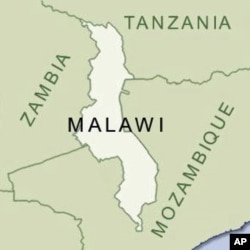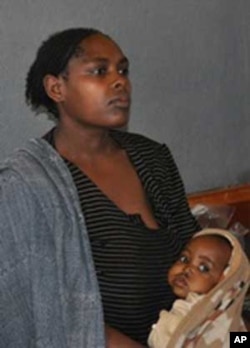In Malawi, the Call to Action project is working to eliminate HIV infection in unborn babies. It’s designed to give hope to women infected with the HIV-virus that they can give birth to healthy children. The project is funded by USAID and run by an American charity, the Elizabeth Glaser Pediatric AIDS Foundation.
Statistics show that over 26,000 children in Malawi are infected annually through mother-to-child transmission and 83 percent of them are living with HIV/AIDS. One in every five children in the country dies of AIDS.
Country Director for the Foundation in Malawi Patricia Mbetu says the project helps reduce those numbers by telling pregnant women about the need to be tested and get counseling on how to avoid mother-to-child transmission (PMTCT).
The prevention effort “has worked for thousands of children in Malawi and other 16 countries where we run our PMTCT projects,” Mbetu says. “What is needed for HIV-positive women is to follow the medical expert’s instructions from the time of conception, throughout the pregnancy, to breastfeeding."
The project supports almost all of the antenatal centers providing the service in three districts of Lilongwe, Dedza and Ntcheu, according to Mbetu. Together, she says they represent 17% of all sites providing PMTCT services in the country.
Since the program began five years ago, Mbetu says, its provision sites have also doubled, from 42 to 91.
“Four of these sites are in [towns or cities], while the remaining are in semi-urban and rural health centres,” she says.
Through the project, says Mbetu, about 20,000 HIV-positive women have given birth to HIV-negative babies.
But the distribution of medicines and medical services by government to many marginalized parts of the country has remained a challenge. It is against this background that the Elizabeth Glaser Foundation teamed up with the government to help with the distribution of medicines in these and other rural areas.
“Our entry point is the ministry of health’s antenatal clinics at facility level,” says Mbetu. “So the programs that we support obviously belong to the ministry of health. We use the health facilities’ antenatal clinics, and we are strengthening the capacities of health workers in order to provide the information and education to mothers attending antenatal clinics.”
She says the health workers can counsel and test the mothers so that if they are infected they will be able prevent their unborn babies from being HIV-positive.
Mothers are also looked after to make sure they maintain preventive medical treatment.
Susan Chakwiya is an HIV-positive mother who has given birth to an HIV-negative baby.
"The beauty about the project is that when the babies are born, healthcare providers follow them up and keep on educating [them] to make sure we continue exclusively breast-feed them for at least six months before they start introducing other foods.”
The CTA project Assessment Report released in September cites shortage of medical personnel, lack of infrastructure and reluctance of men to go for HIV testing as major huddles in the fight. But Mbetu is optimistic that the battle will be won.
“Nothing will stop us. We are also looking at supporting the ministry of health at the national level through working groups where we share our technical expertise and experiences from countries we operate from.”
She says other countries like Botswana and Rwanda have are making considerable headway in reducing the pediatric HIV infection rate.
The rate in Malawi has stabilized at 12 percent, a two percent reduction from 2007.
The permanent secretary for nutrition and HIV and AIDS in the Office of the President and Cabinet, Dr. Mary Shawa, praised the project, saying it has contributed a great deal to the government’s four-year Pediatric HIV Care Scale-up Plan, which seeks to curtail new infection rates.
She says its goal is eliminate mother-to-child transmission and reduce new infection rates among sexually active people to almost two percent by 2015.







